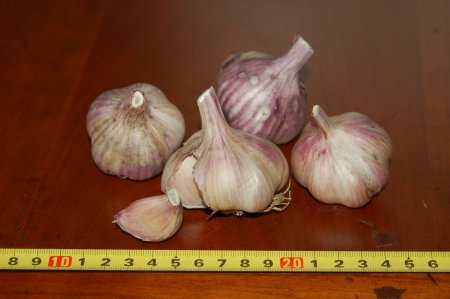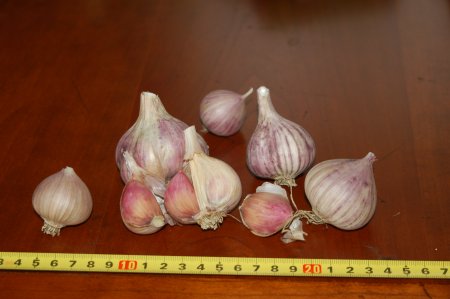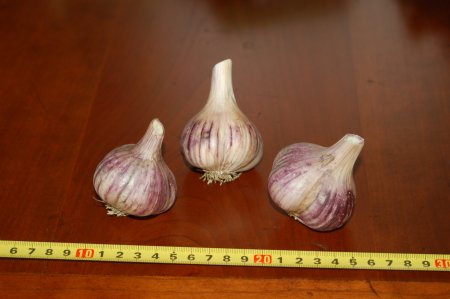I got the idea for this post the other day when having an email exchange with a fellow blogger, who mentioned she grew some commercial/hybrid varieties. This is the 204th post on this blog, and mostly I’ve spent the last 203 posts going over and over all the reasons why commercial varieties are bad and heirloom varieties are good. I think 99% of the time this is true. At the moment I only grow heirloom or Open Pollinated (OP) varieties. In the past I’ve certainly grown commercial/hybrid varieties and I’ll probably do it again in the future.
There is certainly no reason to grow commercial varieties if you don’t want too. There are plenty of heirloom varieties to choose from, and lots of good reasons to choose them. This is more the point I have been trying to make.
Growing your own vegetables and other plants is a lot of work, and the point is not to save a small amount of money on seeds by choosing one variety over another. The small cost of buying seeds, is not the point. The point is to grow the best possible plants, and receive the maximum reward for the time you spend in your garden. This is always the goal of any gardener, and certainly my goal. I am absolutely convinced the best way to achieve this in most cases is by growing heirloom varieties.
The problem is companies that sell us seeds are closely tied to the ones that sell us food. They are the companies that have the political clout to force unwanted GM foods into our food chain. They are very powerful companies with aggressive marketing strategies. In particular they are very good at playing on everyone’s fear of wasting time in the garden, and promoting their products as ‘safer’, and therefore worth the extra cost. They also force nearly all retailers who sell their products to sign marketing agreements, forbidding them from making clear what plant varieties are heirloom or not.
This means if you want to be sure you are buying heirloom varieties, you must buy them from a retailer that does not sell ANY commercial varieties. There are not many retailers like this, and they make this clear in their catalogs or web pages. Just look for a policies or ‘about’ page that clearly states they don’t sell hybrid seeds. Companies like this that do exist are proud of who they are, and make this clear to their customers. There are some links to seed companies like this on the front of this blog, but you can find others by searching the Internet for ‘heirloom seed companies’ or something similar.
Why Are Some Commercial Varieties Better?
First there are OP and hybrid commercial varieties.
Some OP commercial varieties can be better than heirloom, because the supply of heirloom varieties is suffering from decades of neglect. In the last few years a lot more attention has been paid to heirloom varieties, and more and more high quality plant varieties are becoming available.
Some very common vegetables fall into this OP category. For example, green (sometimes called black) zucchini (many people know this as courgette) and a few other common squashes or pumpkins. A few varieties of tomato also fall into this category. In these examples, I wouldn’t say these are superior to heirloom varieties, but if you don’t find them boring there is no particular reason to choose an heirloom variety instead.
There are a few advantages to hybrid varieties, the main thing being they are genetically identical and therefore can be very reliable. In all OP (commercial and heirloom) there are genetic variations between the plants, more with some plants than others.
With some plants the genetic variation is so great a significant percentage of plants will fail to grow properly. Corn and some cole family plants (especially broccoli and brussel sprouts) fall into this category. While there are excellent heirloom varieties of these plants, if what you really want is a very dependable harvest, you are probably better off buying commercial hybrid varieties. Many people still prefer the taste of heirloom varieties, and in particular for broccoli many people like the purple sprouting or nutribud varieties. For brussel sprouts many people like Long Island Improved, and one of my personal favorites is Mezo Nano.
In a few cases modern varieties have resistance to diseases older varieties don’t have. For example some heirloom tomatoes are susceptible to ‘wilt’ viruses. This resistance sometimes works the other way around, for example some heirloom current tomatoes have resistance to late blight that modern varieties don’t have. Marketing also often over-hypes the significance of this, for example promoting a tomato’s resistance to the tobacco mosaic virus, which is primarily an issue for commercial farmers who grow their tomatoes in greenhouses. If you don’t have problems with wilt viruses or other diseases, then having resistant varieties is obviously not an advantage. It’s important to understand exactly what diseases are true risks, and which are the best varieties to address those risks.
Commercial varieties are generally developed for the convenience of farmers. While this doesn’t usually translate to convenience for home gardeners, it sometimes does. For example, many commercial varieties are ‘all at once’ types. This means they are genetically programmed to produce their harvest all in one go, to make it easier for the farmer to use mechanical harvesting techniques. Sometimes for home gardeners who, for example want to process food for storage and it’s easier to have it all at once, this ‘all at once’ trait is more convenient. For most gardeners however, it’s more of an advantage to have the harvest spread out over as much of the season as possible so the food can be enjoyed fresh for as long as possible.
Sometimes it’s not practical to save your own seeds. Very common OP plants, like cover crops or some very ordinary vegetables, are just not worth spending the time saving seeds when they can be purchased very cheaply. There can be times saving seeds is too difficult, for example many biennial plants require skills many home gardeners don’t have.
If you grow flowers, there are many types and colors not available in OP varieties. For example, many heirloom flowers grow large and fast, and hybrid varieties have been developed that are more suitable for smaller spaces and home gardens.
Reasons to Grow Heirlooms
Of course for most of the last few years I’ve been posting about the reasons for growing heirloom plants, but here are some of the main points.
Commercial varieties are boring! Commercial varieties are made for farmers, then repackaged and sold to home gardeners. This means you end up buying the same thing you can buy in the supermarket anyway. In the examples above, I said hybrid varieties of broccoli and corn might be better choices for people who want a dependable harvest. But if I want a dependable supply for commercial broccoli or corn, I can just buy them from my local farmer’s market and save myself a lot of time and trouble! There are much more interesting heirloom varieties available.
It’s too much trouble to get commercial seeds. Like I mentioned above, if you want to buy seeds and be certain they are for heirloom varieties, you need to buy them from a seed company that only sells heirloom varieties. This means if you also want to purchase hybrid varieties, they have to be purchased from another seed company! Why bother?
You are not in control of access to commercial varieties, in case you want to buy them in the future. The patent holders are free to discontinue or limit the sale of anything they want, in order to increase demand or perhaps promote other, newer varieties. While it is possible to save seeds from commercial OP varieties and give yourself some protection for this, it’s not possible to save seeds from hybrid varieties and the patent holders can keep the lineage of hybrid varieties secret, so it’s not possible for others to develop homemade or similar varieties. If a seed company discontinues a particular heirloom variety, it’s always possible for another company to sell it instead, or for it to be made available through the Seed Savers Exchange or similar organization.
With heirloom varieties, you can save your own seeds. Like we all know, seeds are not expensive and many people prefer to buy them each year rather than save them, but at least it’s an option if you want to. Saving seeds has many advantages besides saving money. When you save your own seeds, you can do so selectively from the best plants, thereby saving the genes for the plants that are best suited to your garden. You can also trade the seeds with others, possibly for varieties you couldn’t get any other way.
Heirloom varieties are rapidly becoming extinct! By some estimates, 70% of the pre-WWII varieties are gone, simply because people lost interest in them and didn’t keep the seeds. They will never come back! Of course it’s best to save your own seeds, but even if you don’t by buying heirloom varieties you create a demand for them that makes it possible for seed companies to keep offering them.
While the price of a package commercial seeds is small, the money goes to the wrong place. It goes to fund marketing strategies that are replacing heirloom varieties with commercial ones. The little bit of money goes to companies that have a virtual monopoly on our food supplies.




